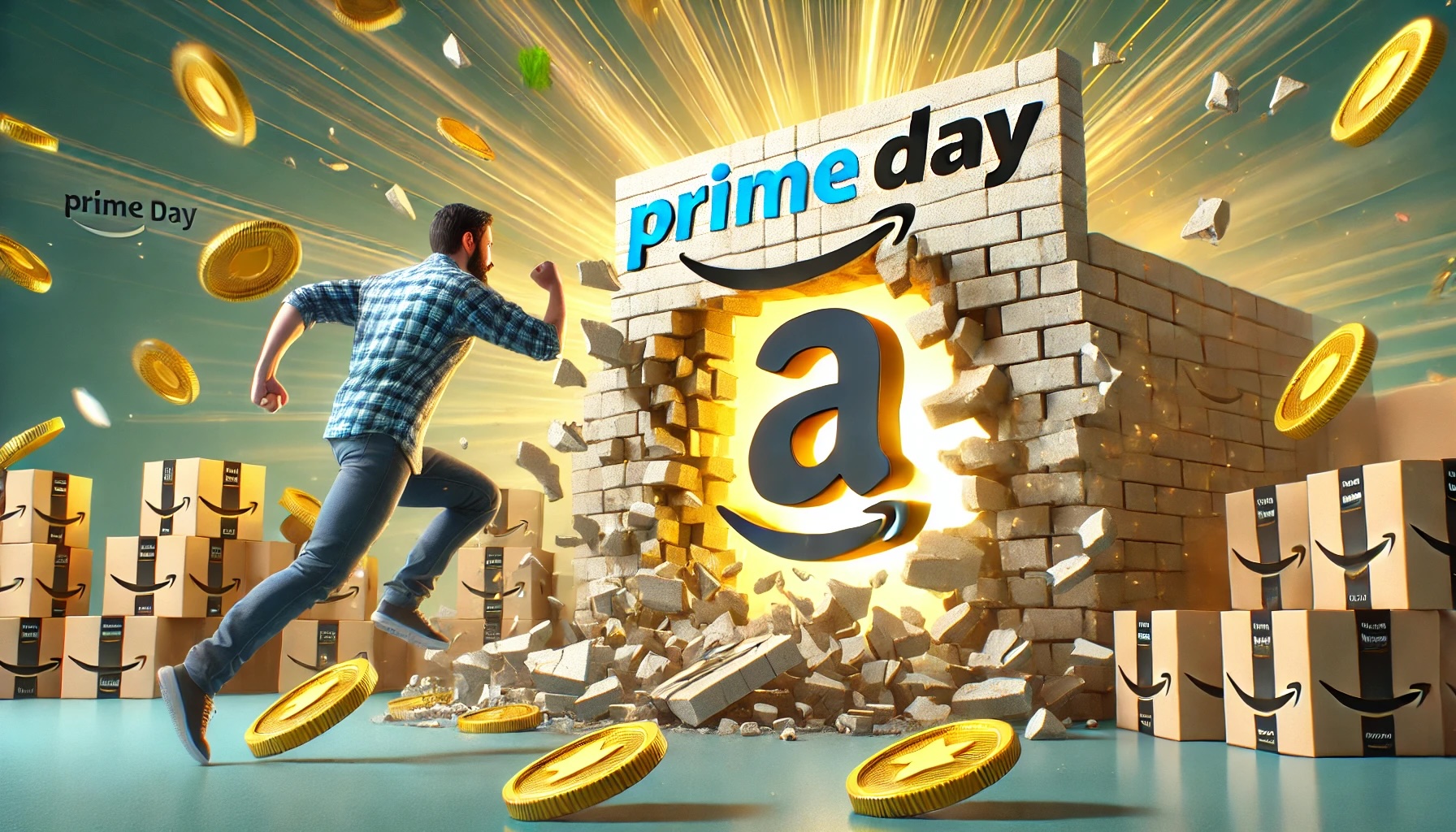Closing the Loop: Converting Social Media Followers into Amazon Customers
Reach shoppers where they spend their time! Social commerce has become a highly effective way that Amazon Sellers streamline the path to the Buy Box

Over the last few years, social commerce has become a game-changing sales channel for Amazon sellers. The meteoric rise of social media and mobile platforms has opened new opportunities to promote products and facilitate shopping for digital-first audiences.
Clever Amazon brands are increasingly leveraging platforms like Instagram, Facebook, TikTok, and Pinterest for social commerce. Strategic product showcasing, social advertising, and influencer partnerships allow brands to drive awareness, consideration, and ultimately sales through their Amazon listings.
Thinking About Hiring an Amazon Management Agency?
Canopy’s Partners Achieve an Average 84% Profit Increase!
Let’s talkAccording to recent surveys, nearly half of online shoppers now regularly make purchases directly through social platforms. And one-third of shoppers say they’ve purchased a product after seeing it on social media. This shift in consumer behavior is a boon for nimble Amazon sellers embracing social commerce.
An influencer marketing strategy can absolutely move the needle for your target audience. By calibrating your social commerce to Amazon’s ecosystem, you can connect with social media users, compete against larger players, and future-proof your business in an increasingly crowded marketplace.
In this post, we’re going to look at how you can leverage social media platforms and influencer marketing campaigns to supplement and amplify your core Amazon business. We’ll define what social commerce means for Amazon-native brands, break down effective social strategies, and highlight some of the latest trends.
But first . . .

What is Social Commerce?
Without a physical brick and mortar store to help drive social proof, social commerce has become an important part of the customer journey for those shopping online.
Social commerce involves leveraging social media’s multiple channels, communities, and influencers to promote products and enable seamless clicks through to Amazon detail pages for transactions.
Whether it’s shoppable posts, optimized product images and videos, or strategically seeded giveaways, social commerce serves as a marketing channel to get products in front of more interested shoppers.
That’s why, for brands selling on Amazon, social platforms like Instagram, Facebook, and TikTok offer a way to directly engage with target audiences, create awareness, and drive traffic to their Amazon listings.

Amazon’s New Partnership With Meta Connects the Dots for Sellers
Amazon and Meta’s recent partnership allows users to link their Facebook and Instagram accounts to Amazon’s marketplace. That connects a lot of dots for ecommerce shoppers (and sellers).
As I wrote in this article, by enabling the sharing of precious data for ad targeting, they’ve thrown open the door to full-throttle, foot-on-the-gas-pedal ecommerce.
This is something that looks like it’s going to have the potential to move the bar for a lot of Amazon sellers.
With – at least – one fewer click before reaching the Buy Box, it’s going to greatly simplify the purchase process and is bound to elevate conversion rates across the board.
5 Key Social Commerce Strategies
Social media platforms like Instagram and Pinterest have become a daily destination for product discovery and inspiration for today’s consumers. As an Amazon seller, you need to tap into these powerful social channels to drive awareness of your brand and products.
With strategic social commerce initiatives, you can connect with customers beyond just your Amazon presence. This opens up new opportunities to grow awareness, engagement, and sales.
Here are five ways social commerce can help you reach customers:
1. Increase Discoverability Through Hashtags and Influencers
Leverage popular hashtags and connect with influencers on your preferred social media platform to get your products in front of interested audiences.
When users are browsing topics like #amazonfinds, #shopthelook, or #musthaves, or following influencers in your niche, your branded posts have the potential to capture attention and drive traffic. Develop a hashtag strategy for your social media apps that includes a mix of branded, product-specific, and trending hashtags to maximize your reach.
Collaborating with influencers who align with your brand values and have a strong following in your target market can greatly amplify your message. Influencer partnerships, such as sponsored posts, product reviews, or takeovers, can introduce your products to new audiences and build trust through authentic endorsements.
Influencers might have a global reach, or have a specific niched-down audience. Although their follower count is smaller compared to macro-influencers or celebrities, micro-influencers’ narrow, specific area of expertise or interest, high engagement rates, cost-effectiveness, and targeted audience has made them a particularly effective element of influencer campaigns.
2. Encourage Social Sharing and Peer Recommendations
User-generated content (UGC) and peer recommendations are highly trusted forms of social proof that can propel sales. Make it easy for happy customers to share their purchases on social media through share buttons, tags, and messaging on your social media platforms.
Encourage customers to tag your brand, use branded hashtags, and share their experiences with your products. Incentivize social media influencers – and customers -to create and share content by running contests, offering rewards, or featuring their posts on your brand’s social media channels.
The more your products are organically shared and recommended by real users, the more likely new shoppers are to discover and trust your brand.
3. Provide an Omnichannel Experience
Meet customers where they already spend time online by enabling seamless shopping through social platforms. From shoppable posts to integrated stores, social commerce allows for browsing, checkout, and payment without leaving apps like Instagram, Facebook, or TikTok.
This omnichannel approach reduces friction in the buying process and caters to users’ preference for convenience. Use features like Instagram Shopping, Facebook Shops, and TikTok’s shoppable videos to showcase your products directly within social content.
Tag products in your posts, stories, and live streams, enabling users to easily access product information and pricing. Integrate your ecommerce platform with social channels to ensure a smooth transition from discovery to purchase, minimizing abandoned carts and increasing conversions for your online store.

4. Engage Through Interactive and Immersive Content
Create interactive and immersive social commerce experiences that captivate potential customers and drive engagement. Utilize features like Instagram Reels, TikTok videos, and Facebook Live to showcase your products in action, provide tutorials, or host Q&A sessions.
These dynamic formats allow you to tell compelling brand stories, demonstrate product benefits, and connect with your audience on a more personal level.
For a next level experience, implement augmented reality (AR) filters or virtual try-on to enable users to visualize themselves using your products. This immersive technology enhances online shopping, builds confidence in purchase decisions, and sets your brand apart from competitors.
By creating interactive and engaging content, you can capture the attention of new shoppers and leave a lasting impression.
5. Leverage Social Listening and Customer Insights
Use social listening tools such as Sprout Social, Brandwatch, or BuzzSumo to monitor conversations, trends, and sentiment related to your brand, products, and industry. They’re a critical component of targeted social commerce and a successful influencer marketing campaign.
By tracking mentions, keywords, and hashtags, you can gain valuable insights into what potential customers are looking for, their pain points, and their opinions on your brand and competitors.
Use these insights to inform your social commerce strategy, product development, and customer service. Identify opportunities to engage with potential customers, address their concerns, and showcase how your products solve their problems.
By actively listening and responding to social conversations, you better demonstrate your brand’s commitment to customer satisfaction and build trust with new shoppers.
How Canopy Management Can Help
For Amazon-native brands, implementing social commerce is a critical piece of an omnichannel sales strategy. Relying solely on Amazon’s internal traffic is no longer enough in today’s competitive marketplace.
Embracing platforms like Instagram and TikTok provides new avenues to creatively engage shoppers, drive product discovery, and increase sales velocity for listings. The trends are clear – consumers want to discover and buy products through social channels.
Forward thinking Amazon sellers are getting ahead of this shift by proactively reaching out to top Amazon agencies for help building their brands on social networks. If you’re looking to future-proof your business and amplify your ecommerce brand’s staying power and profitability, it’s time to reach out to Canopy Management.
Canopy Management is a full-service marketing agency for Amazon and Walmart sellers. Our team consists of former Amazonians, multi-million dollar sellers, and award-winning experts.
Ever wonder what adding 67% more organic sales would mean for your brand?
Turns out that when you combine the massive experience of Canopy’s Amazon Advertising Experts with smart tools and tech, you get industry-leading results like this:
- 84% Average Year-Over-Year Profit Growth for Our Partners
- 2.7 Billion in Revenue Managed
- 99.1% Partner Retention Rate
When you consider the many ways that Canopy Management can help you grow your business, you’ll see why selling on Amazon is much easier “under the Canopy.”
- Strategic Growth Planning
- Listing Copywriting Optimization
- Listing Photography
- Product Videography
- Advertising Management
- Customer Service
- Demand Side Platform (Amazon DSP)
- Amazon Posts
- Full Service Management
- Amazon Review Aggregation


